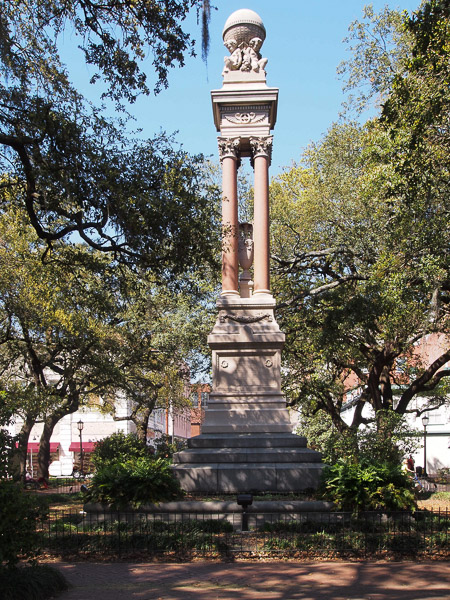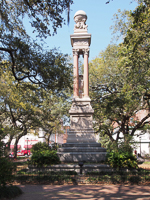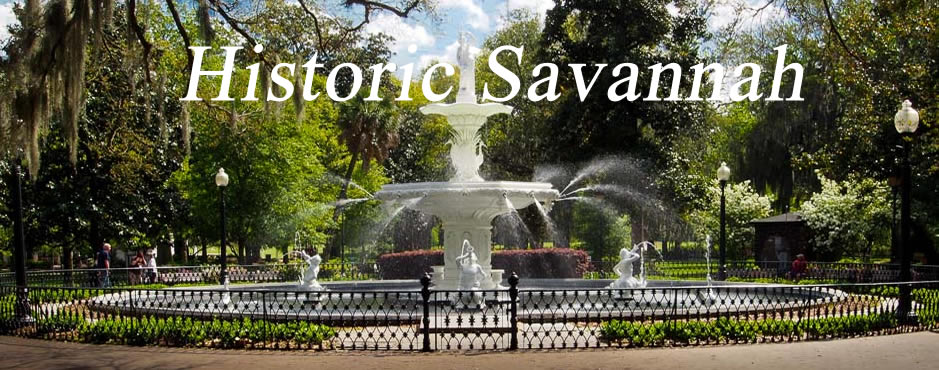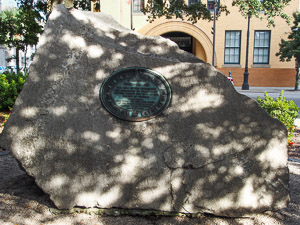 Gordon Monument
Gordon Monument
Gordon Monument
 Gordon Monument
Gordon Monument
Gordon Monument
Savannah, GA 31401
The William Washington Gordon monument was erected in 1883 to honor the founder and president of Georgia’s first railroad, the Central Railroad and Banking Company. He is also known as the grandfather of Juliette Gordon Low, Founder of the Girl Scouts of America.
The grave of Tomo-Chi-Chi, the Yamacraw Indian Chief and friend to Oglethorpe, was originally located in the center of Wright Square under a pyramid of stone. At some point it was decided that the Gordon monument was better suite for the location where Tomo-Chi-Chi was buried. Tomo-Chi-Chi’s gravesite was bulldozed in the early 1880s and the monument to William Gordon was erected in its place.
It is said that Gordon’s widow felt bad about the desecration of the Indian Chief’s grave, and worked with the Colonial Dames of the State of Georgia to obtain a granite boulder from the Stone Mountain Monument Company to memorialize the life and death of the man who was indispensable to the founding and success of the Georgia Colony. The Tomo-Chi-Chi Memorial, a massive granite boulder, stands in the southeast corner of Wright Square.
Gordon's greatest contribution to Georgia was his work with the Central Railroad and Banking Company. When South Carolina completed a 136 mile rail line from the port of Charleston to Hamburg, which was a town directly across the Savannah River from Augusta, it became crucial to Georgia's economy to reach the heart of Georgia's central cotton belt to construct a railroad from Savannah to the interior. South Carolina's new railroad, the longest in the world at that time, threatened to divert the upland cotton export trade to Charleston. The cotton previously had been transported down the Savannah River from Augusta to Savannah, for export to England and the northern states.
Gordon and his associates were determined to maintain Savannah as the port of outlet for Georgia's principal export. In 1833 the legislature granted charters to three railroad companies, including the Central Railroad and Canal Company of Georgia, which in 1835, became the Central of Georgia Railroad and Banking Company. In March 1836 Gordon was named to the company's board of directors and appointed its president.
Gordon labored mightily to bring about the completion of a rail line that would reach the heart of Georgia's central cotton belt, and construction commenced in late 1836. The financial panic of 1837 was an impediment to progress, but by May 1839 seventy-six miles of track had been laid, and stagecoaches were providing transportation from the end of the line to Macon.
Gordon traveled constantly throughout the state, supervising construction, negotiating rights-of-way with planters, and dealing with labor disputes. But he did not live to see the last spike driven in 1843. Worn down by his labors, Gordon died in March 1842 at the age of forty-six from bilious pleurisy.
Gordon was originally buried in Colonial Cemetery in that city; however, his grave was later moved to Laurel Grove Cemetery



